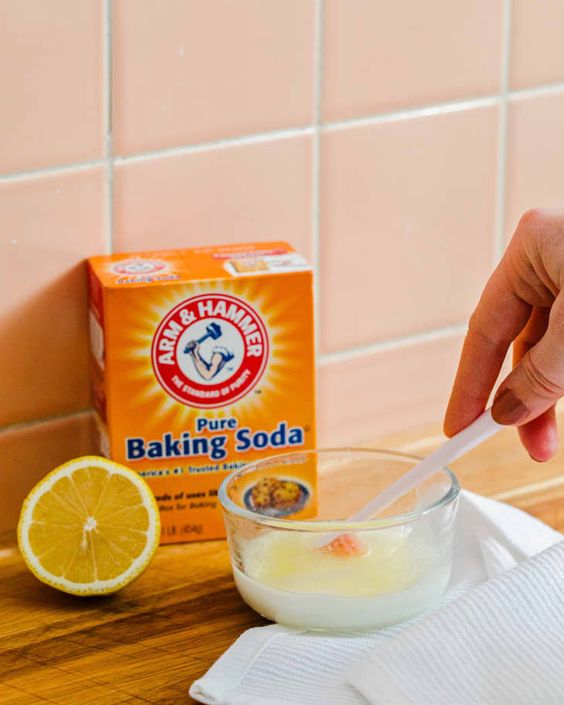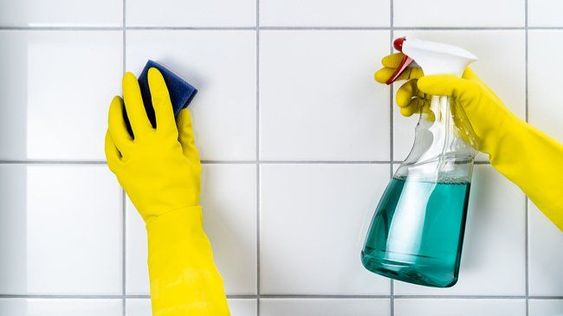The kitchen backsplash is also part of the overall design style of our kitchen, so generally the backsplash in the kitchen will also be equipped with some ceramic tiles, etc. But this location is very special, because it is right in front of the stove, so it will inevitably get some oil stains or other stains, and because it is relatively close to the fire source, long-term baking will also cause these stains to dry very quickly. This makes it more difficult to clean.
How easy it is to clean is entirely up to you. If you clean it casually every day, then the stain will not be very stubborn and you can easily wipe it off, but if you always turn a blind eye to it, then your cleaning difficulty will increase.
Whether it’s simple or not, it’s a place that needs to be cleaned just like you need to do the dishes. It can directly impact the look and smell of your kitchen. If you want to know how to clean them,please keep reading.
Because this place is particularly easy to come into contact with oil fumes, bacteria will also breed in places you can’t see. So it’s best to clean it up at any time every day. As soon as you see an obvious stain, it’s best to wipe it clean immediately. Accumulated and solidified oil stains will be more difficult to clean than you think.
If the stove is used frequently, it needs to be deeply cleaned once a week to prevent oil stains from hiding in places that are difficult to clean easily.
Tools needed
Rubber gloves
Vinegar
Baking soda
Sponge
Small brush
Dish soap
How to clean

Image From thekitchn.com
Daily cleaning
The method of daily cleaning is very simple and only requires one minute of your time when tidying up the kitchen. Mix mild dish soap and warm water in a spray bottle and spray it on your backsplash. Don’t clean immediately after spraying. Wait thirty seconds for the dishwashing liquid to react with the stain. Then you can use a sponge dipped in warm water to wipe the tailgate in a circular motion until there are no obvious stains on the surface. Then wipe the foam clean with a clean sponge, and dry the wall with a dry rag.
Target stubborn oil stains
Deep cleaning is mainly for stubborn and obvious stains on the wall. These stubborn stains generally cannot be wiped off with a sponge, so you need to mix vinegar and baking soda into a paste, and then apply the paste on the stain. You need to let it sit for about ten minutes, and then you can use it. Use the brush to see if the stain can be wiped clean. After cleaning out the stubborn stains,you can continue to follow the daily cleaning method and spray a mixture of dish soap and warm water on the wall to clean it. It is best to wipe the wall dry with a dry rag
Treat discolored walls
Moldy walls are a special case, although rare but they do occur. But discoloration of walls is very common. Walls that have been exposed to oil fume for a long time will turn yellow. Although the oil fume looks like gas, it also contains a lot of oil stains. If the range hood is not turned on for a long time, the wall will also turn yellow.
At this time, you need to use bleach. Although it is not usually used as a cleaning product, it can play a very good role when necessary. Follow the instructions on the bleach and mix it with water according to the proportion, and then clean the discolored or moldy walls. At this time, you need to wear rubber gloves to protect your hands and avoid direct contact with the bleach.
In fact, whether it is daily cleaning or deep cleaning, it does not take long, but it can make your kitchen look cleaner overall and keep a fresh smell.
How to keep your backsplash clean
When frying or frying food, you can cover the pot with a transparent lid to see what’s going on inside and prevent oil from splashing on the wall.
Turn on the range hood when cooking. The range hood can greatly remove the oil fumes. Not only will the oil stains leave traces on the wall, but the invisible oil fumes will also make your walls yellow over time and form stains that are difficult to clean.
After cooking, clean the backsplash and wipe off any obvious oil stains to prevent them from solidifying.
